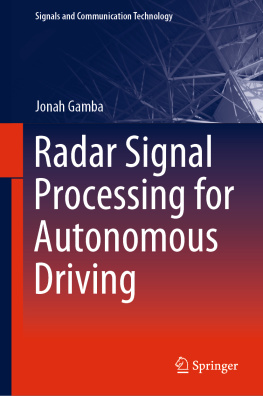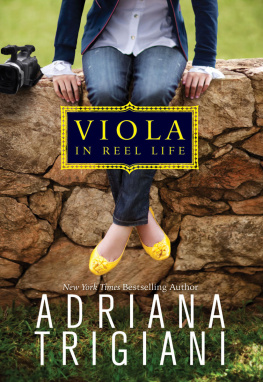Ferguson Paul - The viola da gamba
Here you can read online Ferguson Paul - The viola da gamba full text of the book (entire story) in english for free. Download pdf and epub, get meaning, cover and reviews about this ebook. year: 2018, publisher: Routledge, genre: Art. Description of the work, (preface) as well as reviews are available. Best literature library LitArk.com created for fans of good reading and offers a wide selection of genres:
Romance novel
Science fiction
Adventure
Detective
Science
History
Home and family
Prose
Art
Politics
Computer
Non-fiction
Religion
Business
Children
Humor
Choose a favorite category and find really read worthwhile books. Enjoy immersion in the world of imagination, feel the emotions of the characters or learn something new for yourself, make an fascinating discovery.
- Book:The viola da gamba
- Author:
- Publisher:Routledge
- Genre:
- Year:2018
- Rating:4 / 5
- Favourites:Add to favourites
- Your mark:
- 80
- 1
- 2
- 3
- 4
- 5
The viola da gamba: summary, description and annotation
We offer to read an annotation, description, summary or preface (depends on what the author of the book "The viola da gamba" wrote himself). If you haven't found the necessary information about the book — write in the comments, we will try to find it.
The viola da gamba — read online for free the complete book (whole text) full work
Below is the text of the book, divided by pages. System saving the place of the last page read, allows you to conveniently read the book "The viola da gamba" online for free, without having to search again every time where you left off. Put a bookmark, and you can go to the page where you finished reading at any time.
Font size:
Interval:
Bookmark:

The viola da gamba was a central instrument in European music from the late 15th century well into the late eighteenth. In this comprehensive study, Bettina Hoffmann offers both an introduction to the instrument its construction, technique and history for the non-specialist, interweaving this information with a wealth of original archival scholarship that experts will relish. The book begins with a description of the instrument, and here Hoffmann grapples with the complexity of various names applied to this and related instruments. Following two chapters on the instruments construction and ancestry, the core of the book is given to a historical and geographical survey of the instrument from its origins into the classical period. The book closes with a look at the revival of interest in the 19th and 20th centuries.
Bettina Hoffmann is German and lives in Florence where she pursues an active career both as a performer on the viol and baroque cello and as a musicologist. She has given concerts all over Europe and America, participating as a soloist and with her ensemble Modo Antiquo at major festivals and venues. A significant discography (more than 70 CDs for Deutsche Grammophon, Nave, Brilliant Classics, Tactus and others) is especially notable for Ides grotesques with works by Marin Marais, Scherzi Musicali for viola da gamba by Johann Schenck, and the first complete recording of the works by Diego Ortiz and Silvestro Ganassi. Two CDs of her ensemble Modo Antiquo have been nominated for Grammy Awards. She is the author of the Catalogue of solo and chamber music for viola da gamba (LIM, 2001) and has edited critical facsimile editions of the Regulae Concentuum Partiturae of Georg Muffat and of works for viol and for cello by Antonio Vivaldi and Domenico Gabrielli (Brenreiter-Verlag, S.P.E.S.). She discovered and edited the only German treatise on the viol currently known to us, Instruction oder eine anweisung auff der Violadigamba . Bettina Hoffmann is professor of viola da gamba, baroque cello, performing praxis and baroque chamber music at the Conservatorio Arrigo Pedrollo di Vicenza and the Scuola di Musica di Fiesole.
Bettina Hoffmann
Translated by Paul Ferguson

Copyright 2006 by L'EPOS Societ Editrice s.a.s., Palermo
Copyright German version 2009 by ortus musikverlag Kruger &
Schwinger OHG, Beeskow
Copyright English version 2018 by
by Routledge
2 Park Square, Milton Park, Abingdon, Oxon OX14 4RN
and by Routledge
711 Third Avenue, New York, NY 10017
Routledge is an imprint of the Taylor & Francis Group, an informa business
2018 Bettina Hoffmann
The right of Bettina Hoffmann to be identified as author of this work has been asserted by her in accordance with sections 77 and 78 of the Copyright, Designs and Patents Act 1988.
All rights reserved. No part of this book may be reprinted or reproduced or utilised in any form or by any electronic, mechanical, or other means, now known or hereafter invented, including photocopying and recording, or in any information storage or retrieval system, without permission in writing from the publishers.
Trademark notice : Product or corporate names may be trademarks or registered trademarks, and are used only for identification and explanation without intent to infringe.
British Library Cataloguing in Publication Data
A catalogue record for this book is available from the British Library
Library of Congress Cataloging in Publication Data
A catalog record for this title has been requested
ISBN: 9781-138240230 (hbk)
ISBN: 9781-315284255 (ebk)
Typeset in Times New Roman
by Apex CoVantage, LLC
Bach musicological font developed by Yo Tomita
Translated by Paul Ferguson
Some of the libraries mentioned frequently in the footnotes are referred to by their RISM (Rpertoire Internationale des Sources Musicales) sigla:
- A-ET Schloss Ebenthal bei Klagenfurt, Privatbibliothek Goss
- A-Wn Wien, Nationalbibliothek
- D-B Berlin, Staatsbibliothek preuischer Kulturbesitz
- D-Kl Kassel, Landesbibliothek und Murhardsche Bibliothek der Stadt Kassel
- D-W Wolfenbttel, Herzog-August-Bibliothek
- F-Pn Paris, Bibliothque nationale
- GB-Lbl London, The British Library
- GB-Mp Manchester, Central Public Library
- GB-Ob Oxford, Bodleian Library
- I-Bc Bologna, Museo internazionale e biblioteca della musica di Bologna (formerly: Civico museo bibliografico-musicale)
- I-Fn Florence, Biblioteca nazionale
- I-MOe Modena, Biblioteca estense
- US-NYp New York, Public Library
- ASMN State Archive of Mantua
For viols tuned in the normal interval sequence FourthFourthMajor Third-FourthFourth, sometimes for ease of reading only the lowest-sounding string is stated, as follows:
- Viol in D = Tuning DGcead
- Viol in G = Tuning Gcfadg
- Viol in A = Tuning Adghea
- Viol in d = Tuning dgcead
Numbering starts with the highest-sounding string, e.g. the first string of a viol in D is d.

At first glance this looks like the sort of quite banal but nonetheless thoroughly justified question that can be readily dispatched in just a few crisp sentences. Let us begin therefore by saying that the viol, also known as the viola da gamba (or just gamba ), is a bowed stringed instrument with six strings tuned at intervals of a fourth, a fourth, a third, a fourth and a fourth, with a fretted neck. Its body differs from that of the violin family in that it has sloping shoulders, C-shaped soundholes, less sharply tapering middle bouts, and a flat back ending in a tilted peg-box. The back and the soundboard do not overhang the ribs. Players hold the instrument vertically and support it with their legs. The bow is held with an underhand grip.
If you like your descriptions short and sweet then no doubt you will be perfectly satisfied with what you have just read. Unfortunately, the products of human ingenuity can rarely be encapsulated in a few short and simple phrases, and the viol seems to show particular agility in escaping simplifications of this kind. It is therefore not without some regret that we are forced to admit that only an annoyingly small part of the above description can be universally applied to the viol.
Let us start with the external form of the instrument. It is certainly true that the characteristic body-shape we have just described eventually prevailed during the Baroque era, but what an amazing richness of stylistic development and experimentation it went through to reach that stage! If we look at examples from the Renaissance we find not only rounded shoulders sloping at every conceivable angle but, just as often, square shoulders formed at 90 degrees or even at acute angles. Waists can end in sharp edges, as with the violin (). So where exactly do we draw the line between the two great families of stringed instruments? What are the special characteristics that make a viol what it is? This question will continue to exercise us, but here, for the time being, we can leave it unanswered.
Font size:
Interval:
Bookmark:
Similar books «The viola da gamba»
Look at similar books to The viola da gamba. We have selected literature similar in name and meaning in the hope of providing readers with more options to find new, interesting, not yet read works.
Discussion, reviews of the book The viola da gamba and just readers' own opinions. Leave your comments, write what you think about the work, its meaning or the main characters. Specify what exactly you liked and what you didn't like, and why you think so.



![Viola Spolin - Improvisation for the Theater: A Handbook of Teaching and Directing Techniques [1963 ed.]](/uploads/posts/book/406435/thumbs/viola-spolin-improvisation-for-the-theater-a.jpg)






